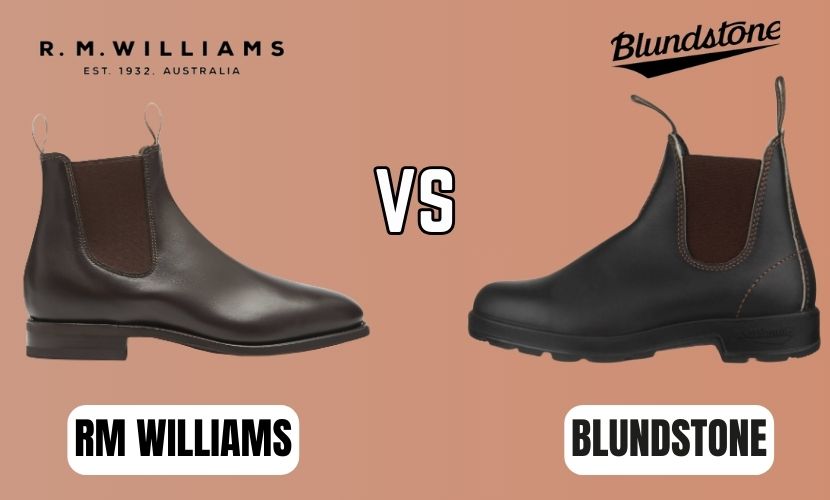Regarding selecting the right running shoe, there are many factors to contemplate. One of the most efficient is whether you require a stability or moderate shoe. Hoka One One features two popular choices in these categories: the Hoka Arahi and the Hoka Mach.
The Hoka Arahi is a sturdy shoe offering extra support for overpronating athletes. It is slightly more heavier than the Hoka Mach but still provides a snug ride with plenty of padding. On the other hand, the Hoka Mach is a delicate and reactive neutral shoe. It is a famous option among athletes who want a shoe that can control short and long distances.
Both shoes have advantages and disadvantages; the choice eventually depends on the personal runner’s requirements and preferences. This article will look deeper at the Hoka Arahi vs Mach and help you determine which shoe perfectly fits you. By examining the dissimilarities in pattern, fit, and performance, we offer you the information you require to create an informed decision and find the ideal shoe for your running goals.
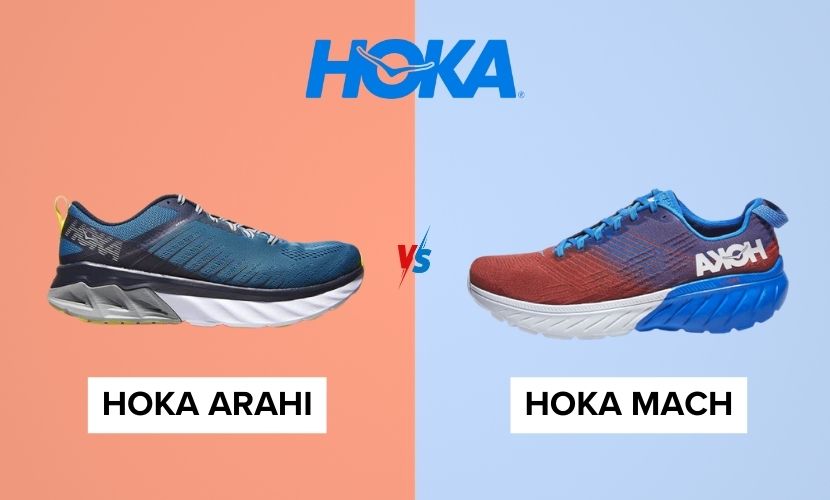
Feature Table: Hoka Arahi Vs Hoka Mach
| Feature | Hoka Arahi | Hoka Mach |
| Shoe Type | Stability Running Shoe | Neutral Running Shoe |
| Weight | Heavier | Lightweight |
| Stability System | J-Frame for Overpronation | EVA J-Frame for Stability |
| Ride | Stable, Adequate Padding | Smooth, Lightweight |
| Heel-to-Toe Drop | Varies | 5mm |
| Ideal For | Overpronators, Support | Versatile Running, Reactivity |
| Upper Material | Permeable Netting, Supportive | Engineered Mesh, Lightweight |
| Suitable Terrain | Various Surfaces | Various Runs, Long Distances |
| Suitable Use | Supportive, Long-Distance | Daily Training, Tempo Runs |
| Price | Typically Lower | Typically Higher |
Understanding Hoka Arahi
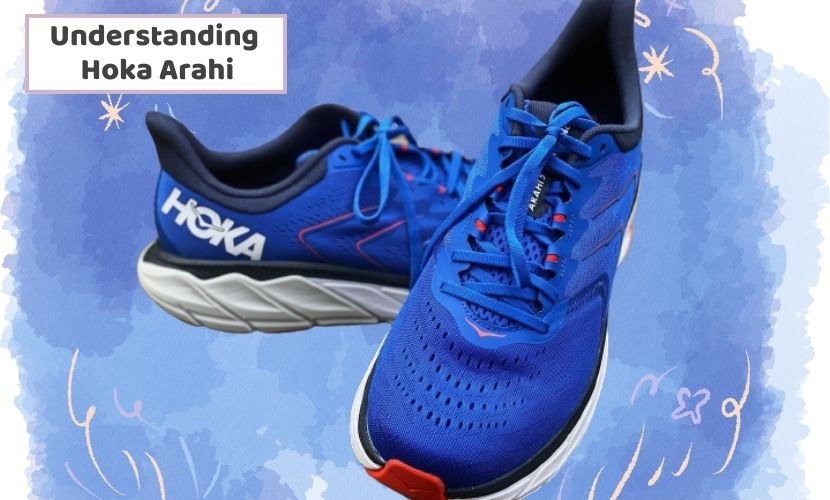
Key Features of Hoka Arahi
Hoka Arahi is a rugged running shoe structured for runners inclined to overpronate. The shoe offers a versatile stability system called the J-Frame, a sturdier density foam that runs along the medial part of the shoe. This aids to instructs the foot and avert overpronation. The shoe also contains a Meta-Rocker design, which gives an even and stable ride.
The upper of the Hoka Arahi is designed of a permeable netting material that adapts to the foot’s appearance. The shoe has a cushioned tongue and collar for extra comfort. The shoe’s lacing system is manufactured to offer a safe and personalised fit.
The outsole of the Hoka Arahi is designed of a durable rubber material that features excellent grip on various surfaces. The outsole also has critically positioned flex grooves that permit a natural extent of motion.
Performance of Hoka Arahi
The Hoka Arahi is a well-padded shoe that offers a snug ride. The shoe’s J-Frame stability system does an outstanding job guiding the foot and averting overpronation. The Meta-Rocker pattern also aids in offering a smooth and sturdy ride.
The shoe’s permeable mesh upper offers excellent circulation, maintaining the foot cool, fresh and dry. The shoe’s lacing system permits a safe and personalized fit, which helps to avert skidding and sliding inside the shoe.
The outsole of the Hoka Arahi gives an excellent grip on various surfaces, making it an iconic shoe for distinct terrain. The shoe’s flex grooves also permit a natural extent of motion, which minimizes the possibility of injury.
Overall, the Hoka Arahi is a well-structured stability shoe that offers remarkable support and ease for athletes inclined to overpronate.
Exploring Hoka Mach
Hoka Mach is an average running shoe that has attained a reputation among athletes because of its feathery design and reactive padding. In this part, we will explore the major attributes and performance of Hoka Mach.
Key Features of Hoka Mach
Hoka Mach is engineered to offer a snug and reactive ride thanks to its chief characteristics:
- PROFLY™ midsole: The PROFLY™ midsole is designed of a rubberised foam material that offers a reactive and padded ride. It is mushier in the heel for impact absorption and sturdier in the forefoot for propulsion.
- Engineered mesh upper: The manufactured netting upper is permeable and adapts to the foot for a snug fit. It also contains a padded tongue and collar for additional comfort.
- Early stage Meta-Rocker: The Early stage Meta-Rocker is a versatile geometry that encourages an even and natural stride cycle.
Hoka Mach also contains a 5mm heel-to-toe drop, which offers a stabilized platform for an innate foot strike.
Performance of Hoka Mach
Hoka Mach is a versatile shoe that can be utilized for different runs, incorporating tempo runs, elongated runs, and even races. It’s delicate design and reactive padding create it a great choice for athletes who want a fast and snug ride.
The Hoka Mach contains a “snappy ride” and is “ideal for picking up the pace.” The PROFLY™ midsole features good stabilisation of padding and reactiveness, creating it adaptable for both short and long runs.
Overall, Hoka Mach is an outstanding option for athletes needing a lighter, reactive shoe to control various runs. Its major attributes and performance create it a famous choice among athletes of all standards.
Comparing Hoka Arahi and Hoka Mach
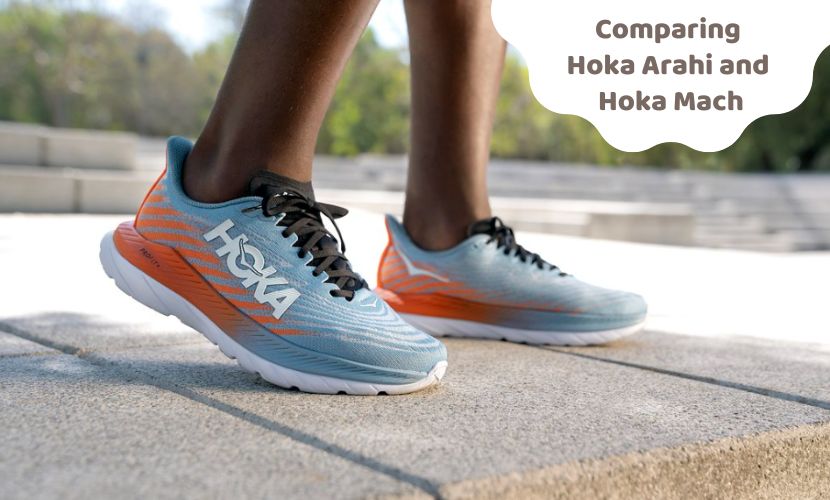
Concerning running shoes, Hoka has become a famous brand among athletes. Two of their famous designs are the Hoka Arahi and the Hoka Mach. In this part, we will contrast the two models and focus on their similarities and dissimilarities.
Similarities
- The Hoka Arahi and the Hoka Mach are engineered for running and offer a snug fit.
- They both contain the same stack height, which shows they offer a similar standard of cushioning.
- They both utilize Hoka’s Meta-Rocker technology, which aids with a flat heel-to-toe transition.
- Both designs have an absorbent upper that permits appropriate ventilation during runs.
Differences
- The Hoka Arahi is a rugged shoe; on the contrary, the Hoka Mach is a neutral shoe. This shows that the Arahi gives more support for overpronators, while the Mach is adaptable for athletes with an average gait.
- The Arahi has a denser midsole, which offers more steadiness, while the Mach has a mushier midsole, which gives a more padded ride.
- The Hoka Arahi is moderately more heavier than the Hoka Mach, which may be a factor for several athletes.
- The Arahi has a broader toe box than the Mach, which may be more snug for runners with extensive feet.
The Hoka Arahi and the Hoka Mach are remarkable running shoes. Still, they contain several major differences that may make one model more ideal for a runner. The Arahi is a sturdy shoe with more support, while the Mach is a moderate shoe with a more padded ride. Eventually, the two designs will be selected based on the runner’s particular requirements and preferences.
Sizing Comparison
Concerning discovering the perfect fit for your running shoes, sizing is a critical factor to examine. In this part, we will contrast the sizing tables of Hoka Arahi and Hoka Mach.
Sizing Chart of Hoka Arahi
Hoka Arahi provides a broad extent of sizes for both men and women. The sizing table of Hoka Arahi is given below:
| US Size | UK Size | EU Size |
| 7 | 6 | 40 |
| 7.5 | 6.5 | 40 2/3 |
| 8 | 7 | 41 1/3 |
| 8.5 | 7.5 | 42 |
| 9 | 8 | 42 2/3 |
| 9.5 | 8.5 | 43 1/3 |
| 10 | 9 | 44 |
| 10.5 | 9.5 | 44 2/3 |
| 11 | 10 | 45 1/3 |
| 11.5 | 10.5 | 46 |
| 12 | 11 | 46 2/3 |
| 12.5 | 11.5 | 47 1/3 |
| 13 | 12 | 48 |
| 14 | 13 | 49 1/3 |
| 15 | 14 | 50 2/3 |
Sizing Chart of Hoka Mach
Hoka Mach also features many sizes for both men and women. The sizing chart of Hoka Mach is given below:
| US Size | UK Size | EU Size |
| 7 | 6 | 39 1/3 |
| 7.5 | 6.5 | 40 |
| 8 | 7 | 40 2/3 |
| 8.5 | 7.5 | 41 1/3 |
| 9 | 8 | 42 |
| 9.5 | 8.5 | 42 2/3 |
| 10 | 9 | 43 1/3 |
| 10.5 | 9.5 | 44 |
| 11 | 10 | 44 2/3 |
| 11.5 | 10.5 | 45 1/3 |
| 12 | 11 | 46 |
| 12.5 | 11.5 | 46 2/3 |
| 13 | 12 | 47 1/3 |
| 14 | 13 | 48 2/3 |
| 15 | 14 | 49 1/3 |
It is necessary to mention that Hoka Mach provides a limited extent of sizes for women, ranging from 5.0 to 11.0; on the other hand, Hoka Arahi provides a size extent of 5.0 to 12.0 for women. Furthermore, Hoka Mach is moderately lighter than Hoka Arahi, which may be a factor to examine for athletes who prefer weight.
Weight
One of the efficient dissimilarities between the Hoka Arahi and Mach is their weight. The weight of a running shoe is critical as it influences the overall ease and performance of the runner. The following is a comparison of the weight of the two shoes:
- The men’s edition of Hoka Arahi weighs approximately 9.3oz or 263.65g; on the contrary, Hoka Mach weighs around 8.6oz or 232.5g.
- The women’s version of Hoka Mach is accessible in sizes extending from 5.0 to 11.0, while Hoka Arahi is obtainable in sizes ranging from 5.0 to 12.0.
The dissimilarity in weight between the two shoes can be attributed to the components used in their formation. Hoka Arahi provides a more considerable sole unit that offers finer stability, while Hoka Mach is structured to be more feathery and stretchable.
It is efficient to mention that the shoe’s weight may differ based on the size and gender of the athlete. It is suggested to test on both shoes and select the one that feels the most snug and supportive for the personal’s requirements.
In summary, the weight of a running shoe is a critical factor to consider when selecting between Hoka Arahi and Mach. On the other hand, Hoka Arahi is moderately heavier; it features better steadiness, while Hoka Mach is more delicate and flexible.
Price
Price is an efficient factor in selecting between Hoka Arahi and Hoka Mach. The costs of these shoes differ based on the model and where you buy them.
The Hoka Arahi 5 costs $130 on the Hoka website; on the contrary, the Hoka Mach 5 is priced at $140 on Zappos. It is efficient to mention that the costs may differ based on where you buy the shoes and if there are any ongoing sales or discounts.
Regarding value for money, both the Hoka Arahi and Hoka Mach provide great attributes and advantages that justify their costs. The Hoka Arahi is a sturdy shoe with a J-Frame midsole that offers support and padding, while the Hoka Mach is a moderate shoe with a lightweight pattern that provides a smooth ride.
Eventually, the selection between the two shoes will be based on individual preference and the particular requirements of the runner. It is suggested that athletes test on both shoes and detect which one feels more snug and supportive before hitting the jackpot decision.
Overall, while the prices of the Hoka Arahi and Hoka Mach may vary, both shoes offer great value for money and are worth mentioning for athletes searching for quality running shoes.
What are the differences between Hoka Arahi and Mach?
Hoka Arahi and Hoka Mach are two famous running shoes from Hoka One One. On the contrary, both shoes offer remarkable padding and support, and there are several major differences between them that athletes should be aware of before breaking the bank decision.
Stability vs Neutral
One of the key differences between Hoka Arahi and Hoka Mach is that the former is a sturdy shoe while the latter is a moderate shoe. This shows that Hoka Arahi is structured to offer extra aid and stability for athletes who overpronate or have smooth feet. At the same time, Hoka Mach is constructed for runners with an average gait.
Weight
Another dissimilarity between the two shoes is weight. Hoka Mach is typically more delicate than Hoka Arahi, which may create it a finer option for runners who prefer speed and legerity.
For instance, the women’s edition of Hoka Mach weighs approximately 6.8oz or 193g, while the women’s version of Hoka Arahi weighs 7.6oz or 215.46g.
Midsole
Both shoes attribute Hoka’s signature midsole padding, but several differences exist in the materials utilized. Hoka Arahi offers a denser midsole with firmer foam in the heel to offer extra support, while Hoka Mach contains a mushier midsole constructed to be more reactive and snug.
Upper
Finally, the upper of the two shoes is also distinct. Hoka Mach offers a permeable manufactured netting upper structured to be feathery and comfortable; on the other hand, Hoka Arahi has a more manufactured upper with extra overlays for additional support and steadiness.
Those who require extra support and firmness may prioritize Hoka Arahi, while those who prefer speed and legerity may go for Hoka Mach.
Which Hoka shoe is best for running, Arahi or Mach?
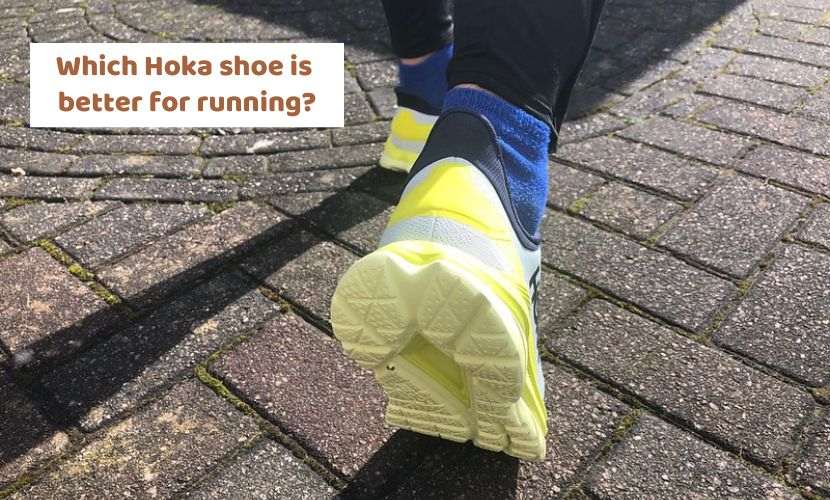
Regarding selecting between Hoka Arahi and Hoka Mach for running, it is based on the athlete’s foot kind and running style. Both shoes have advantages and disadvantages, and it’s necessary to consider them before deciding.
Hoka Mach
Hoka Mach is an ideal running shoe with remarkable padding and impact absorption. It’s a feathery shoe adaptable for athletes prioritizing a more reactive and faster ride. The Mach contains a rocker shape that encourages an even transition from heel to toe, creating it perfect for athletes who land on their midfoot or forefoot.
However, the Mach lacks the sturdy attributes that athletes with overpronation need. It may not be the perfect option for those who require extra support and control to avert injuries.
Hoka Arahi
Hoka Arahi is a rugged running shoe that offers excellent aid and control for athletes with overpronation. It contains a J-Frame pattern that covers around the heel and elongates to the midfoot, giving steadiness and averting excessive inward spinning of the foot.
The Arahi also has an abundant padding system that provides a snug ride, creating it ideal for long-distance runs. However, the Arahi is more weighted than the Mach, and its stability attributes may not be ideal for athletes who don’t require extra support.
In conclusion, the selection between Hoka Arahi and Hoka Mach inclines on the athlete’s foot kind and running style. Runners with overpronation may take advantage of the stability characteristics of the Arahi, while moderate runners may prioritize the feathery and reactive ride of the Mach.
What are the benefits of choosing Hoka Arahi over Mach?
Regarding selecting between Hoka Mach and Hoka Arahi, it’s efficient to consider the advantages of every shoe. While both shoes are amazing for runners, Hoka Arahi has some versatile characteristics that create it emerging from the Mach.
One of the main advantages of selecting Hoka Arahi is its stability. Hoka Arahi is constructed to offer moderate steadiness, creating it an amazing option for athletes who require additional support. The shoe gives Hoka’s J-Frame technology, which utilizes a firmer density foam on the medial part of the shoe to help avert overpronation. This can be particularly helpful for athletes prone to injuries or with smooth feet.
Another advantage of Hoka Arahi is its feathery pattern. Despite its sturdy attributes, the shoe is still comparatively lightweight, creating it an amazing choice for athletes who need a shoe that won’t weigh them down. The shoe’s EVA foam padding also offers a snug ride, minimising tiredness during long runs.
Regarding design, Hoka Arahi has several versatile features that separate it from Mach. For instance, the shoe’s midsole contains a gradient colour that typically bleeds into a distinct solid colour on the back part of the shoe. This gives the shoe a modish, modern look that many athletes appreciate.
Overall, while both Hoka Mach and Hoka Arahi are ideal running shoes, Hoka Arahi’s stability, feathery pattern, and unique style create it an amazing choice for runners who require extra aid and desire a shoe that seems great too.
Is Hoka Mach 4 suitable for daily training?
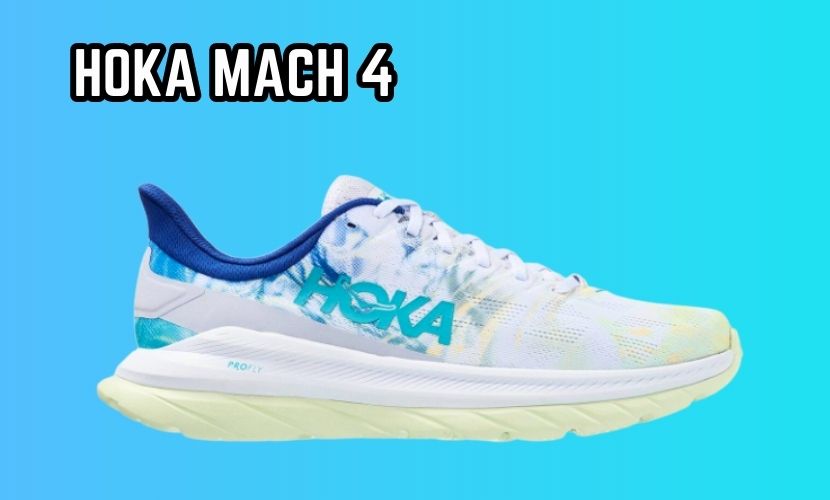
Hoka Mach 4 is a moderate running shoe with remarkable padding, good impact absorption, and longevity. It is a famous option among runners who desire a shoe that can handle regular training.
The shoe is constructed to be iconic and can be utilized for distinct kinds of running, incorporating long runs, tempo runs, and uptempo work. It responds appropriately to routine training paces, creating it an ideal choice for athletes who need a shoe that can keep up with their daily training routine.
However, there may be better options for faster intervals or races, as the padding could be more mushy for some runners. If you are searching for a shoe that can control faster paces, consider a more reactive shoe.
Overall, Hoka Mach 4 is a firm option for runners who desire a snug, durable shoe that can handle regular training. It is an iconic shoe that can control various running workouts and is an amazing choice for runners who need a shoe that can go on with their training routine.
| Hoka Arahi | Hoka Mach |
| Stability running shoe | Neutral running shoe |
| Heavier than Hoka Mach | Lightweight |
| Unique stability system | Innovative EVA J-Frame |
| Inconsistent ride | Flat waisted geometry |
| Ample cushioning | Good stability |
Conclusion
The selection between the Hoka Arahi and the Hoka Mach is eventually based on the runner’s requirements and likings.
The Hoka Arahi is a sturdy runner switches a versatile stability system and adequate padding, making it a great choice for those who require additional support for overpronation. However, it is more heavier than the Hoka Mach and contains an inconsistent ride.
On the other side, the Hoka Mach is a moderate running shoe that is feathery and smooth-riding. Its revolutionary EVA J-Frame and flat-waisted geometry gives good steadiness, making it an ideal option for those prioritizing a more natural feel to their running shoes.
Both shoes contain their advantages and disadvantages, and it eventually depends on the athlete’s requirements and preferences.
The Hoka Arahi and the Hoka Mach are amazing running shoes with versatile attributes and advantages. Runners should consider their requirements and preferences before creating a final decision.
Read more on:




